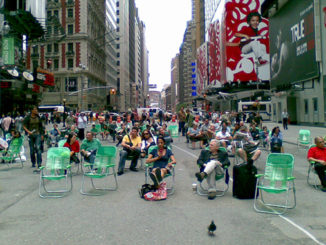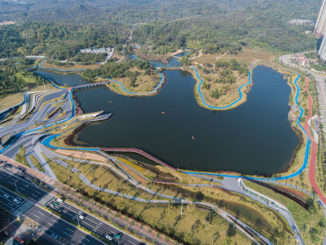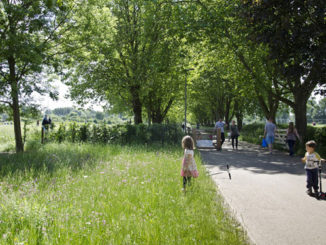We reported on Singapore’s plan for Bishan Park back in late 2009 (‘Kallang River to reappear in Bishan Park‘) and the plan has now come to fruition with Singapore’s Prime Minister recently opening the park to the public. The design was undertaken by Atelier Dreiseitl
Mr Herbert Dreiseitl, Founder and Partner from Atelier Dreiseitl stated back in 2009.
“As a strong new impulse for the future, an infrastructure that can be appreciated and accessed by citizens which at the same time respects the environment in a sustainable manner also brings about a subtle change in behaviour and thinking and it is through this change that we can begin to create places which are vibrant, healthy and full of socio-cultural liveliness. Bishan Park has already the beginnings of this, and bringing the river and water element back to the people, will further enhance the place.”

Bishan Park is one of Singapore’s most popular parks in the heartlands of Singapore with more than 3 milllion visitors to the park annually. As part of a much-needed park upgrade and plans to improve the capacity of the Kallang River along the edge of the park, works were carried out simultaneously to transform the utilitarian concrete channel into a naturalised river, creating new spaces for the community to enjoy.
This project is part of the Active, Beautiful, Clean Waters (ABC Waters) Programme of the Public Utilities board in Singapore, which manages the country’s water supply and drainage – a long-term initiative to transform the country’s water bodies beyond their functions of drainage and water supply, into vibrant, new spaces for community bonding and recreation.
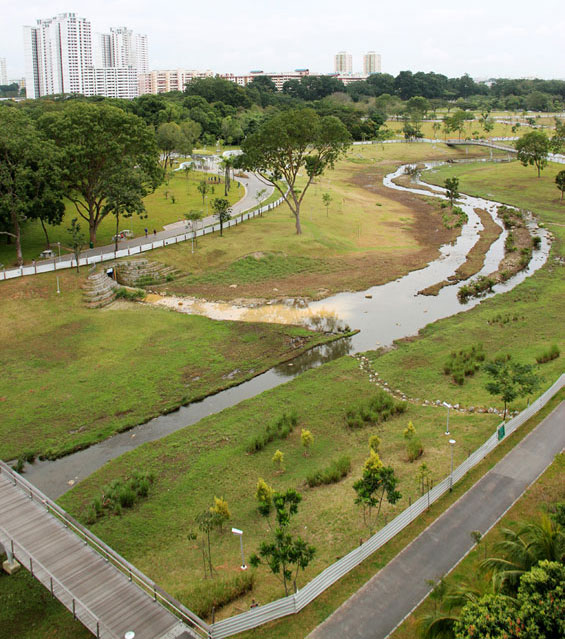
At Bishan Park, a 2.7 km long straight concrete drainage channel has been restored into a sinuous, natural river 3 km long, that meanders through the park. Sixty-two hectares of park space has been tastefully redesigned to accommodate the dynamic process of a river system which includes fluctuating water levels, while providing maximum benefit for park users. Three playgrounds, restaurants, a new look out point constructed using the recycled walls of the old concrete channel, and plenty of open green spaces complement the natural wonder of an ecologically restored river in the heartlands of the city. This is a place to take your shoes off, and get closer to water and nature!
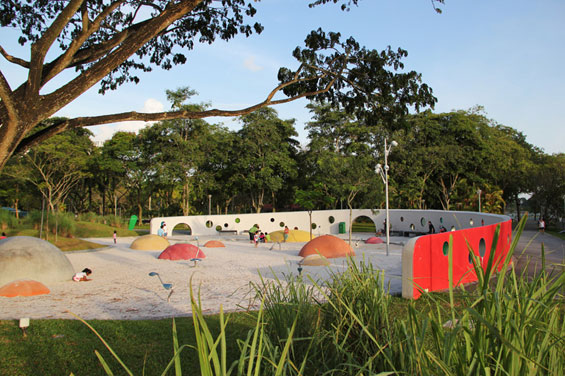
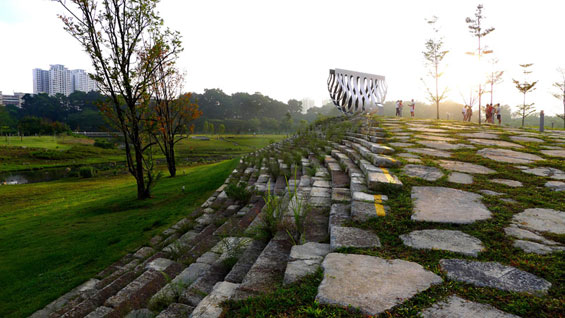

In addition, the park provides generous open spaces for recreational activities and the soft, planted river banks allow people to get close to the water. In the case of a heavy downpour, the park land that is next to the river doubles up as a conveyance channel, carrying the water downstream. Bishan Park is an inspiring example of how a city park can function as ecological infrastructure, a smart combination of water source, flood management, biodiversity, recreation, and thanks to personal contact and an emotional connection with water, increasing civic responsibility towards water.
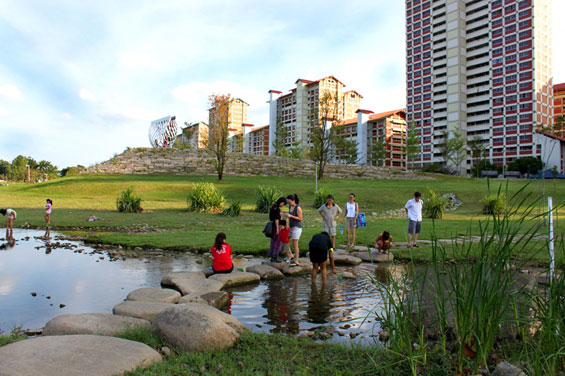

History
The Kallang River is the longest river in Singapore and flows for 10 kilometres through the centre of the island from the Lower Peirce Reservoir to Marina Reservoir.
In the 1960s and 70s, concrete drains and canals, including Kallang River along Bishan Park, were built to alleviate widespread flooding. As in many other cities around the world, today, this approach of rapidly conveying rainwater runoff has to be complemented with a more holistic set of solutions to meet the challenges posed by weather uncertainties and increasing urbanisation.
At Kallang River-Bishan Park, the unique plan to break down the concrete channel and create a naturalised waterway was conceived for the first time in Singapore. Designed based on a floodplain concept, people can get closer to water and enjoy recreational activities along the river banks when water level in the river is low, and during heavy rain, the park land that is next to the river doubles up as a conveyance channel.
The increased roughness of the natural riverbed with rocks, pools and riffles means the velocity of river has been slowed down, so fewer particles are transported downstream to the Marina Reservoir where they would need to be extracted through filtration. The increased conveyance capacity of the river and decreased velocity means flood protection for the dense urban areas surrounding the park as well.
Biodiversity at Bishan Park
No wildlife was introduced to the park but the introduction of the naturalised river into the park has seen the park’s biodiversity increase by 30%. 66 species of wildflower, 59 species of birds and 22 species of dragonfly have been identified in Bishan Park; not bad for a city park.
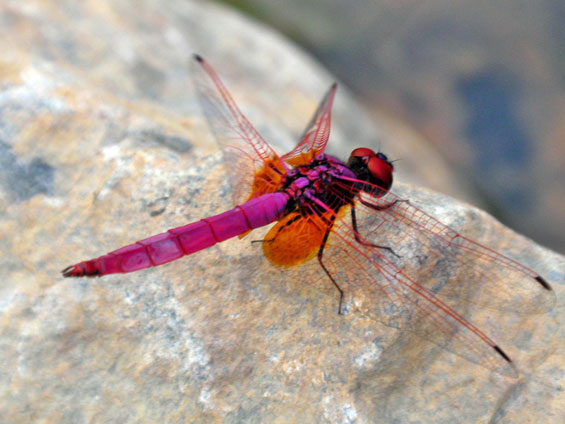
Singapore lies within the Asian-Australasian Flyway so the park can expect to receive some special migratory bird visitors. A few surprise visitors have already been spotted including Zanzibar Red Bishop, native to Africa, the Spotted Wood Owl, native to the jungle forest in Indonesia, Long Tailed Parakeet, native in the Andaman islands and the Orange Cheeked Waxbills, native to western and central Afrika. Birds (such as the purple herons, munias and water hens) that are seldom seen in a high-dense urban neighbourhood have also been spotted (and even roosting) among the new vegetation. The Malay archipelago is one of the world’s greatest biodiversity hotspots, second only to the Amazon, and the tropical rainforest climate is home to an abundance of lush vegetation.
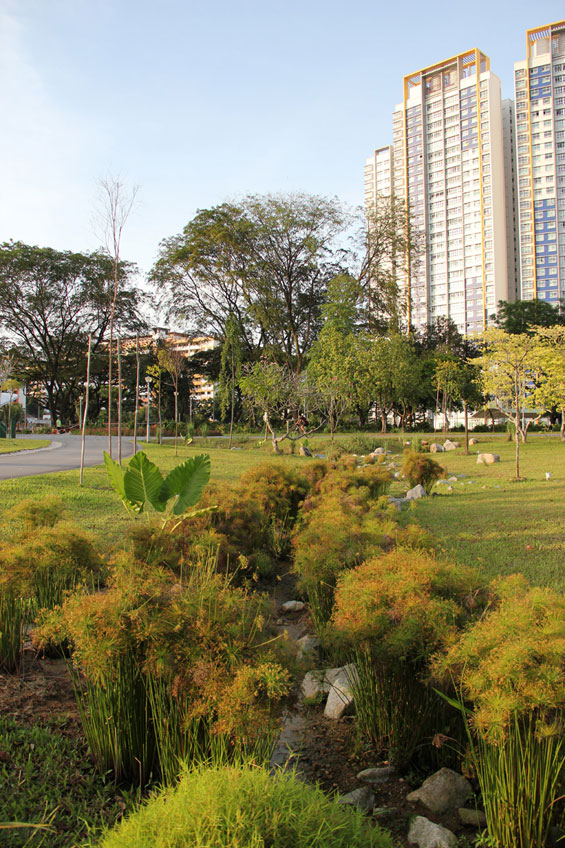
The restoration of the river has created a huge variety of micro-habitats which not only increase biodiversity but the resilience of species within the park, meaning their long term ability to survive is greatly improved.
Soil Bioengineering
The use of soil bioengineering techniques to stabilize the river banks is a first for Singapore and a new reference for soil stabilisation in the tropics, which have otherwise rarely been used or documented.
In 2009, a test reach was constructed, testing 10 different soil bioengineering techniques and a wide variety of native plant species along a length of 60 metres at one of the side drains in the park. Seven of these techniques were then selected for use along the main river. These include fascines, rip-rap with cuttings, geotextile wrapped soil-lifts, brush mattresses with fascines, reed rolls, planted gabions, and geotextile with plantings. As soil bioengineering is largely untested in the tropics and South East Asia, the test reach was used to refine the selection of appropriate techniques and plants, as well as the most efficient and effective construction methods. Extensive systematic testing was carried out, including measuring the depth and tenacity of root development.
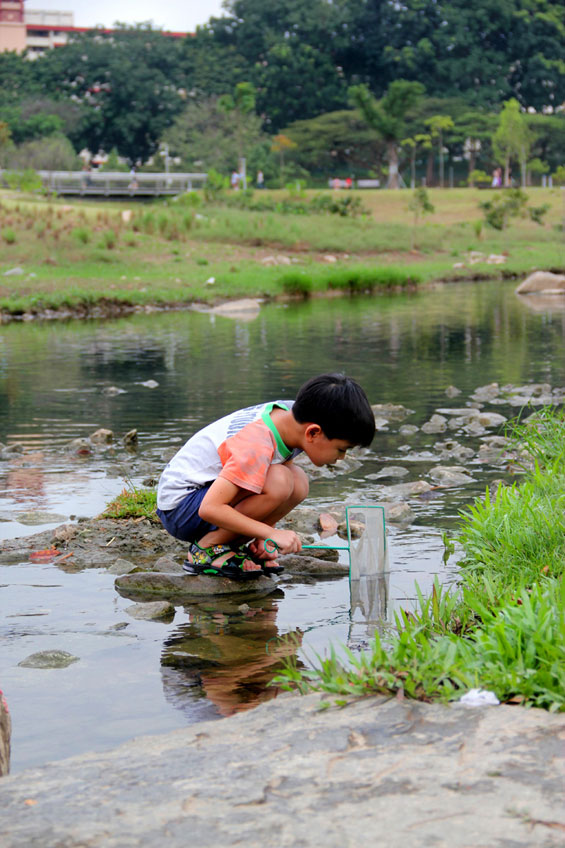
Kallang River-Bishan Park, Singapore
Area of Bishan Park: 52 hectares (before redevelopment), currently 62 hectares
Annual visitorship: more than 3 million
Timeline construction: October 2009 to February 2012, officially opened on 17th March by the Prime Minister of Singapore
Project designer: Atelier Dreiseitl
Project engineers: CH2MHILL
Project owners: PUB, Singapore’s national water agency and the National Parks Board


